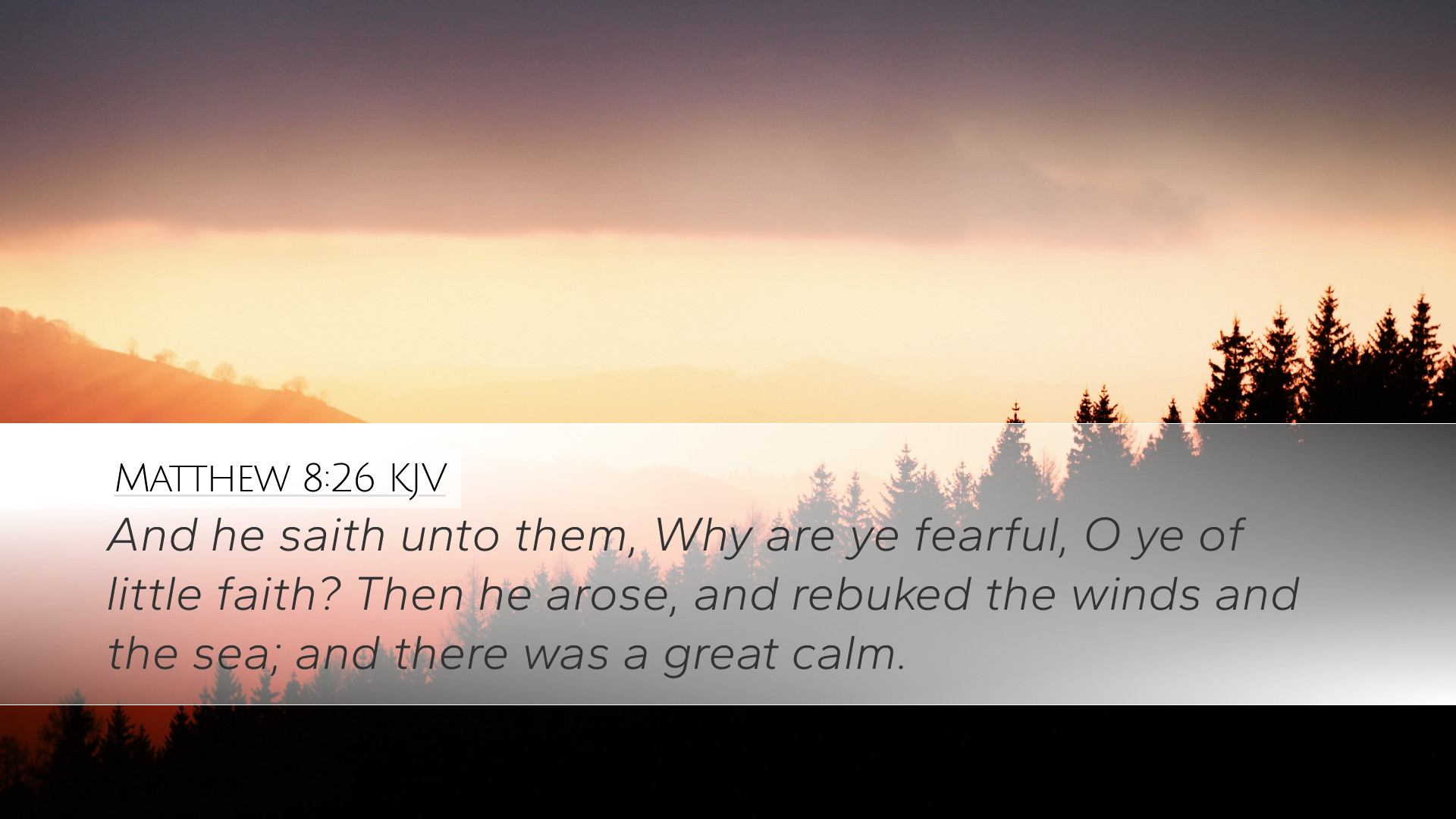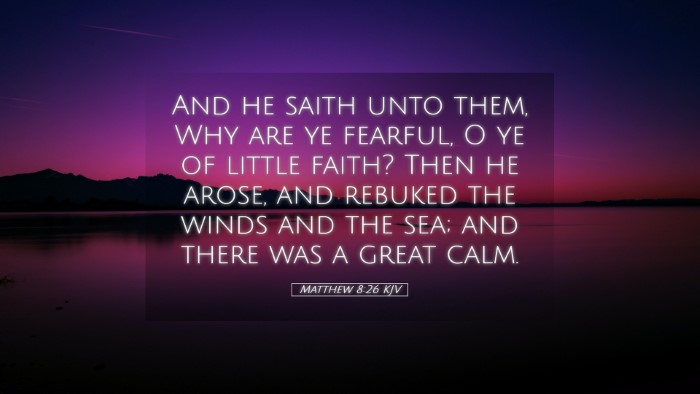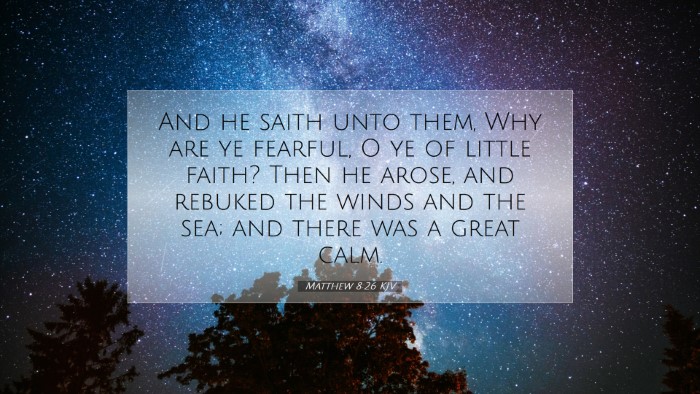Bible Commentary on Matthew 8:26
Verse: "But he said to them, 'Why are you afraid, O you of little faith?' Then he rose and rebuked the winds and the sea, and there was a great calm."
Introduction
The passage from Matthew 8:26 is a profound insight into the character of Christ and the nature of faith amidst tumultuous circumstances. The echo of the disciples' fear in the storm illustrates not only their immediate peril but also their spiritual journey and understanding of who Jesus is. This commentary synthesizes perspectives from public domain sources, providing depth for pastors, students, theologians, and Bible scholars.
Contextual Background
In the preceding verses, Jesus had performed several miracles, demonstrating His authority over sickness and demons. After a day of teaching and healing, He and His disciples crossed the Sea of Galilee. The storm that ensued becomes a stage for teaching about faith and Jesus' divinity.
Analysis of the Text
- Fear and Faith: Jesus addresses His disciples with a penetrating question: “Why are you afraid, O you of little faith?” This indicates that their fear was not simply a natural reaction to danger but a reflection of their limited faith. Matthew Henry views this as a teachable moment, illustrating that fear is a challenge to faith, and the disciples' little faith was in grave need of strengthening.
- The Role of Jesus: Adam Clarke comments on the authority of Christ, observing that His rebuke of the winds and sea not only calms the storm but also reveals His divine power over nature. This act reinforces the belief that Jesus is not merely a teacher or prophet but God incarnate, who commands the very elements He created.
- Theological Implications: Albert Barnes notes that the rebuke of the wind and the sea serves as an emphatic revelation of Jesus' messianic identity. The calm that followed His command illustrates the peace that Christ brings amidst chaos—a theme echoed throughout the Gospels. Here, faith in Christ assures believers of His sovereignty over life's storms.
- Symbolism of the Sea: The sea in biblical literature often symbolizes chaos and disorder. The sudden calm signifies the restoration of peace that Jesus brings. As Clarke emphasizes, this reflects not only a physical act of calm but a spiritual assurance that true rest can be found in Christ alone.
Lessons for Today
- The Nature of Faith: The disciples’ fright teaches modern believers about the vulnerability of faith. Fear often creeps in during trials, casting doubt on God’s presence and power. Pastors can encourage their congregations to assess their own 'little faith' and trust in Christ amidst life’s storms.
- Jesus' Authority: Understanding that Jesus possesses authority over all creation encourages a deeper trust in Him. As Barnes points out, acknowledging this authority is pivotal for authentic worship and discipleship today, prompting believers to relinquish control and surrender to His will.
- Response to Fear: When experiencing anxieties that overwhelm, believers are called to remember Christ’s words. The model presented encourages prayer, reflection on Scripture, and the communal support of the church to bolster faith in Jesus’ promises.
- Presence of Christ in Trials: Just as Jesus was physically present with the disciples in the boat, believers are assured of His presence through the Holy Spirit in their own storms. This assurance can transform fear into worship, as they remember that He is with them, even when circumstances seem dire.
Conclusion
Matthew 8:26 serves as a poignant reminder of the ongoing struggle between fear and faith. As Jesus calmly addresses His disciples' panic, He invites them—and us—into a deeper faith that recognizes His power over every tempest of life. The insights from Matthew Henry, Adam Clarke, and Albert Barnes enrich our understanding of this passage, challenging readers to contemplate their own faith in Christ amidst the uncertainties of life. Embracing this truth nurtures spiritual resilience and cultivates a heart of worship.


